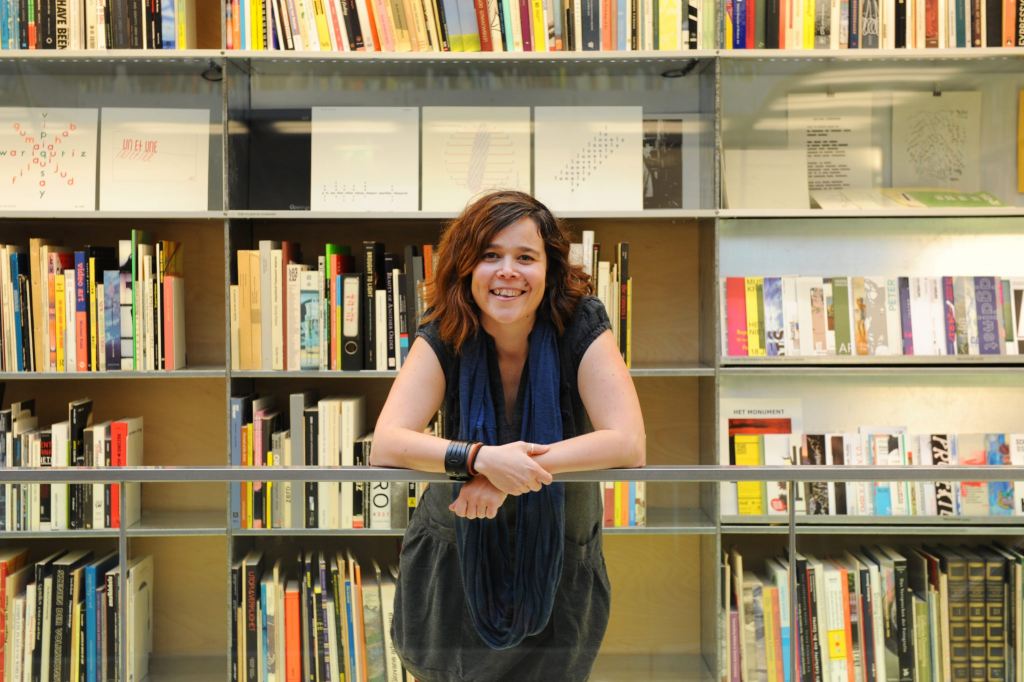
People from many different countries live, study and work in Eindhoven. Every week, E52 has a talk with an international about what brought them here and what life is like in Eindhoven.
Name: Gemma Medina
Country of origin: Spain
Work: Art historian and Independent research curator at Van Abbemuseum
We meet Gemma in one of the most relaxed spaces of the Van Abbemuseum: the library. We sit down at a long table, between all the books and art magazines and a beautiful view of the Dommel river. In the spacious and luminous oriel are armchairs we would like to lay down in, looking so comfortable. But no time for such thing: we are here to talk with Gemma about her life in Eindhoven.
“I’m from the Canary Islands, and I studied in Tenerife. Later I did a post-grad course about cultural development, my PhD. Research on Photography of architecture in the 60s and a master course in Utrecht about curating beyond exhibitions. I wanted to be a journalist, but when I learned about art history, I knew I wanted to study it. Art combines the best of the human being. Humans can build and destroy. I chose to study about the first option. I like to be optimistic and try to look at the good side. Even when I write reviews of art, I like to extract what is genuine.”
Gemma is all about connecting art and the museum with the society. “I like to share my enthusiasm. Currently, I’m doing what I like most, bringing art closer to the people, outside the institution. In the past years, the Van Abbemuseum has been busy rethinking the role of the museum and the art of the 21st century, to let it be more useful to society. In the Arte Util archive we have an archive of more than 250 cases of art as a tool for transformation, artistic thinking, politics, economics, communities, collaborating in new ways. So this way the museum is less about collecting. Another example is a project with social designers (The Umbrella) and our Agents of Change’ Tours. We used the archive of Arte Util as an inspiration and went to the neighbourhoods searching for art, social design and community initiatives in Eindhoven that are dealing with contemporary issues. Now . And the Werksalon, the first floor of the new building, is used for the exploration on how to connect the collection to the city.”
“I really like the unusual combination of things you see in Eindhoven”Gemma Medina, Art historian
“We came to the Netherlands 11 years ago. My partner is an electronic engineer, and he found a job as a researcher at Philips. We decided to take the plunge and start a new life in Eindhoven. I really wanted to learn Dutch and joined a course. For the language practices, I applied at the Van Abbemuseum. It’s like a language internship. I helped at the info point at the entrance, which was very good for my Dutch. Later I also did a work internship and jumped in the Becoming Dutch project here at the museum. It was a snowball effect, one thing led to the other, and I’m still working with the museum. With those internships, I got involved in the city.”

“Eindhoven is super different compared to other Dutch cities, but I really like the unusual combination of things you see here. The small scale, the multiculturalism, the possibilities to meet people from all around the world. Then you have the farming history of Eindhoven, and people are still proud of it. On the other hand, there is also very experimental and forward spirit, a heritage of Philips and the technological development. I love it that the PSV football fans call themselves farmers! Eindhoven is the perfect place for a child to grow up in. Children are very present in the Dutch culture, you can take them anywhere. If you go to the bank there is something for kids to play with. The Dutch are very practical people.”
“In my spare time, I love to gather with friends. We have Mexican and Dutch friends, and we always have so much fun! But we also love to go to a tech festivals, like the Maker Faire. We sent some pictures of it to the grandparents and they said we were in the future! And of course, I always like to explore new exhibits at Onomatopee and De Fabriek.”
Read all the internationals stories here.
Photography: Diewke van den Heuvel


